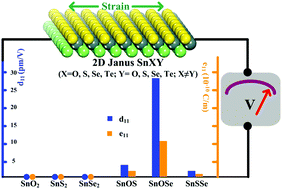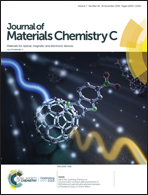Stabilities, and electronic and piezoelectric properties of two-dimensional tin dichalcogenide derived Janus monolayers
Abstract
Using first-principles calculations, the stabilities, electronic structures and piezoelectric properties of two-dimensional (2D) tin dichalcogenide derived Janus SnXY monolayers (X = O, S, Se, Te; Y = O, S, Se, Te; X ≠ Y) are systematically investigated. Apart from the structural instability of SnOTe, all the other Janus monolayers are proved to be thermodynamically, dynamically and mechanically stable. The electronic property calculations demonstrate that Te-participated Janus systems are always metallic and the other systems have a band gap in the range of 0.33–1.74 eV. The appropriate valence band maximum positions guarantee these semiconducting Janus monolayers to be applied as effective catalysts for the oxygen reduction reaction. Due to losing the inversion symmetry, Janus materials exhibit piezoelectric properties. Surprisingly, the largest predicted in-plane piezoelectric coefficient d11 for SnOSe is as high as 27.3 pm V−1, which is one order of magnitude greater than those of reported fashionable piezoelectric materials, such as quartz, MoS2, etc. Our results indicate that 2D tin dichalcogenide derived Janus monolayers are strong candidates for future atomically thin piezoelectric applications in the fields of transducers, sensors, and energy harvesting devices.



 Please wait while we load your content...
Please wait while we load your content...